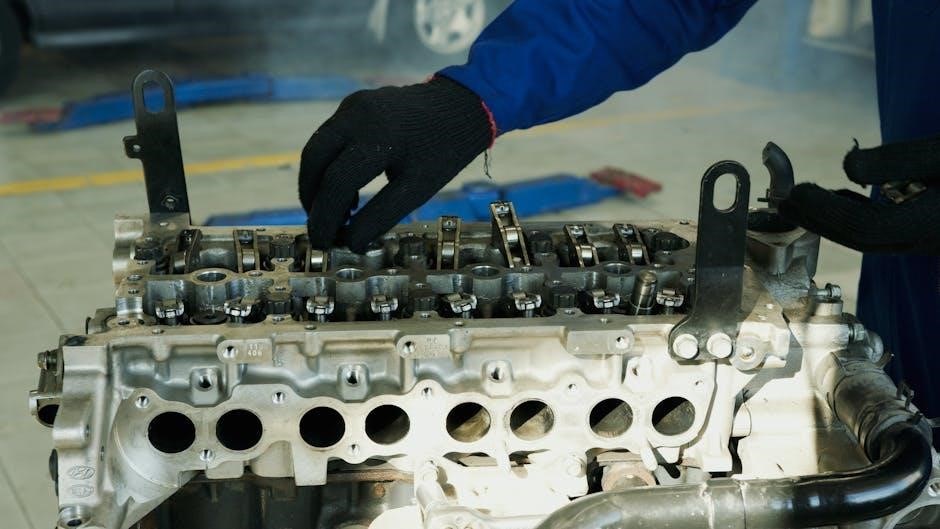
Our Auto Maintenance Checklist PDF provides a comprehensive guide to keep your vehicle in optimal condition. It includes essential checks, schedules, and tips to ensure safety, efficiency, and longevity. By following this actionable plan, you can prevent costly repairs, maintain performance, and extend your car’s lifespan. Download and print it today for a hassle-free maintenance experience!
Overview of the Importance of Regular Vehicle Maintenance
Regular vehicle maintenance is essential for ensuring safety, efficiency, and longevity. It helps prevent costly repairs by addressing issues early, reducing the risk of breakdowns. Proper upkeep enhances performance, fuel efficiency, and reliability, while also extending the lifespan of your car. By following a structured maintenance schedule, you can avoid unexpected failures and ensure your vehicle remains in optimal condition. This proactive approach not only protects your investment but also contributes to safer driving conditions and environmental sustainability.
Benefits of Using a Printable Car Maintenance Checklist
A printable car maintenance checklist offers numerous advantages, helping you stay organized and proactive with your vehicle’s care. It provides a clear, structured plan to track essential tasks, ensuring no maintenance steps are overlooked. By following the checklist, you can save money by avoiding costly repairs, reduce downtime, and maintain your car’s performance. It also serves as a valuable record of completed services, providing peace of mind and potentially boosting your vehicle’s resale value. Download and print one today for a convenient, stress-free maintenance experience!

Understanding the Basics of Car Maintenance
Regular car maintenance involves essential checks like fluid levels, tire pressure, and brakes to ensure safety and performance. A printable checklist helps track these tasks efficiently, preventing issues and extending your vehicle’s lifespan.
Why Regular Maintenance is Crucial for Vehicle Longevity
Regular maintenance is essential for ensuring your car runs safely, efficiently, and lasts longer. Neglecting routine checks can lead to costly repairs and premature wear. By addressing issues early, you protect critical components like the engine, brakes, and tires. A well-maintained vehicle performs better, consumes fuel efficiently, and reduces the risk of breakdowns. Consistency in following a maintenance schedule safeguards your investment and ensures reliability on the road. Over time, proper care extends the lifespan of your car, saving you money and stress.
Key Components of a Comprehensive Car Maintenance Schedule
A well-rounded car maintenance schedule includes regular checks of fluid levels, tire pressure, and brake systems. It also involves inspecting belts and hoses for wear and replacing air and fuel filters as needed. Scheduled services like oil changes and timing belt replacements are crucial. Additionally, ensuring proper electrical system function and addressing worn-out parts promptly prevents major issues. A detailed schedule helps track these tasks, ensuring your vehicle remains in peak condition and avoids unexpected breakdowns.
Monthly Car Maintenance Checks
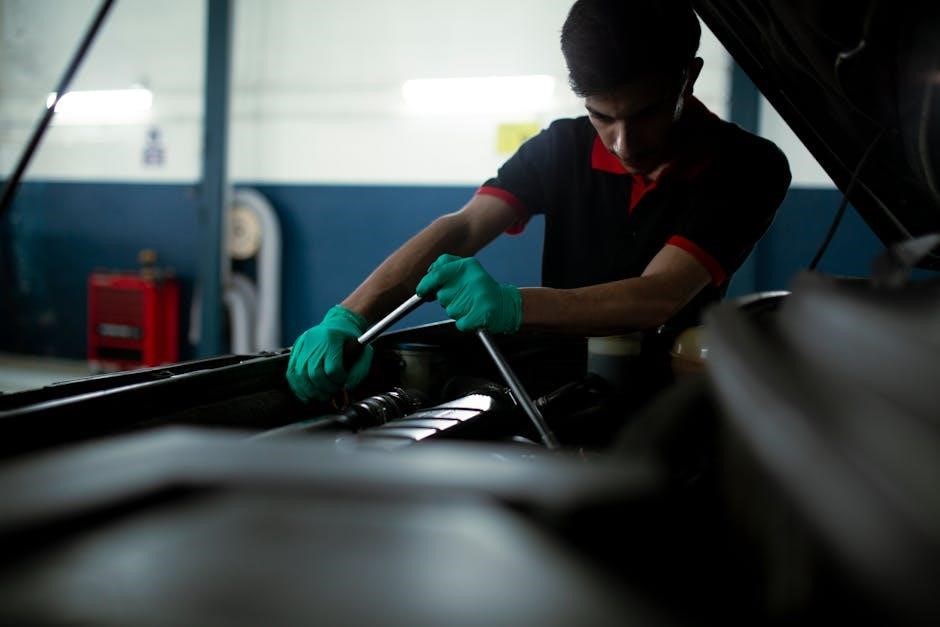
Regular monthly checks ensure your vehicle runs smoothly. Inspect fluid levels, tire pressure, and lighting systems. Also, check windshield wipers and washer fluid for optimal performance and safety.
Fluid Levels: Oil, Coolant, Brake, and Transmission
Regularly checking fluid levels is crucial for your car’s health. Engine oil lubricates the engine, while coolant prevents overheating. Brake fluid ensures proper braking, and transmission fluid keeps gears functioning smoothly. Low levels or contamination can lead to serious damage. Always use the correct type of fluid for your vehicle, as specified in the owner’s manual. If you notice leaks or discoloration, address the issue promptly. Maintaining proper fluid levels ensures optimal performance, prevents costly repairs, and extends your car’s lifespan. Keep a log to track fluid checks and changes for better maintenance organization.
Tire Pressure and Tread Depth Inspection
Checking tire pressure monthly is essential for safety and efficiency. Use a pressure gauge to ensure tires are inflated to the manufacturer’s recommended level, found in the owner’s manual or on the tire information placard. Proper pressure improves fuel efficiency, handling, and reduces wear. For tread depth, use the penny test: insert a penny into the tread groove with Lincoln’s head down. If his head is visible, the tread is worn to 2/32″ and needs replacement. Uneven wear or bald spots indicate alignment issues. Regular inspections prevent accidents and ensure compliance with safety standards.
Lighting and Electrical Systems Check
Regularly inspect your vehicle’s lighting and electrical systems to ensure safety and visibility. Check all exterior and interior lights, including headlights, brake lights, turn signals, and hazard lights. Verify that all bulbs are functioning properly and replace any damaged or dimming ones. Inspect the condition of lenses for cracks or fogging. Test the electrical system, including the battery, alternator, and fuses, to ensure proper power distribution. Addressing issues promptly prevents accidents and maintains reliable vehicle operation. A well-functioning electrical system is crucial for overall vehicle performance and safety on the road.
Windshield Wipers and Washer Fluid
Inspect your windshield wipers for signs of wear, cracks, or damage. Replace them every 6-12 months or when showing signs of deterioration. Ensure the washer fluid reservoir is filled with a high-quality solution to maintain visibility during driving. Avoid using water, as it can freeze in cold temperatures. Test the wipers and washer system to ensure proper function. Clean the wiper blades regularly to remove dirt and debris. Proper maintenance of these components is essential for clear vision and safe driving conditions, especially during rainy or snowy weather.

Every 3 Months Maintenance
Check the battery health and clean terminals to ensure proper function. Inspect belts and hoses for cracks or wear. Replace the air filter if necessary for optimal performance.
Battery Health and Terminal Cleaning
Regularly inspect the battery terminals for corrosion or damage. Clean them with a wire brush and baking soda to ensure proper electrical connections. Check the battery water levels (if applicable) and charge the battery if necessary. Corrosion and loose connections can lead to starting issues and electrical system failures. Always wear protective gloves and eyewear when handling batteries. A well-maintained battery ensures reliable engine starts and optimal vehicle performance. Replace the battery every 5-7 years or as recommended by the manufacturer to avoid unexpected breakdowns.
Belts and Hoses Inspection
Inspect serpentine belts and hoses every 3 months or as recommended by your vehicle’s manufacturer. Look for cracks, frays, or signs of wear. Replace belts showing excessive wear to prevent sudden failures. Hoses should be checked for leaks, soft spots, or bulges. Tighten loose connections and replace damaged hoses immediately. Use a flashlight to inspect hard-to-reach areas. Replace belts and hoses at the recommended intervals (typically every 50,000 to 100,000 miles) to avoid costly repairs. A failed belt or hose can lead to engine damage or breakdowns.
Air Filter Condition and Replacement
Check the air filter every 3 months or as needed, especially in dusty conditions. Inspect for dirt, debris, or damage. Replace the air filter every 15,000 to 30,000 miles, depending on your vehicle’s manufacturer recommendations. A dirty air filter can decrease fuel efficiency, reduce engine performance, and increase emissions. Use a clean, high-quality filter to ensure proper airflow and protect your engine. Refer to your vehicle’s manual for specific guidelines. Regular replacement helps maintain optimal engine health and improves overall vehicle performance.

Every 6 Months Maintenance
Inspect brake pads, rotors, and the exhaust system for wear or damage. Check suspension and steering components for proper alignment and functionality. Ensure everything is in good condition to maintain safety and performance.
Brake Pads and Rotors Inspection
Inspecting brake pads and rotors every 6 months is vital for safety and performance. Check for wear, thinning, or scoring on the rotors. If pads are worn below 1/8 inch or show uneven wear, replace them. Look for cracks or excessive rust on rotors, which may require resurfacing or replacement. Ensure brake hardware is secure and properly lubricated. Neglecting this can lead to reduced stopping power and increased repair costs. Always consult a professional if unsure about the condition or replacement process.
Exhaust System Check
Inspecting the exhaust system every 6 months ensures optimal performance and safety. Look for leaks, dents, or rust in the pipes, muffler, and catalytic converter. Check connections for tightness and inspect the exhaust manifold for cracks. A damaged system can lead to reduced fuel efficiency, increased emissions, and noise. If issues are found, consult a professional for repairs. A well-maintained exhaust system improves engine performance, reduces pollution, and prevents costly repairs. Regular checks help ensure your vehicle runs smoothly and safely.
Suspension and Steering Components
Inspecting suspension and steering components every 6 months is crucial for maintaining vehicle stability and control. Check shock absorbers, struts, and springs for wear or leaks. Examine ball joints, tie rods, and steering gear for looseness or damage. Ensure the steering wheel is aligned properly and responds smoothly. Look for signs of uneven tire wear, which may indicate misalignment. Addressing issues promptly prevents poor handling, reduces safety risks, and avoids costly repairs. Regular checks ensure a smooth ride and precise control, keeping your vehicle safe and reliable on the road.
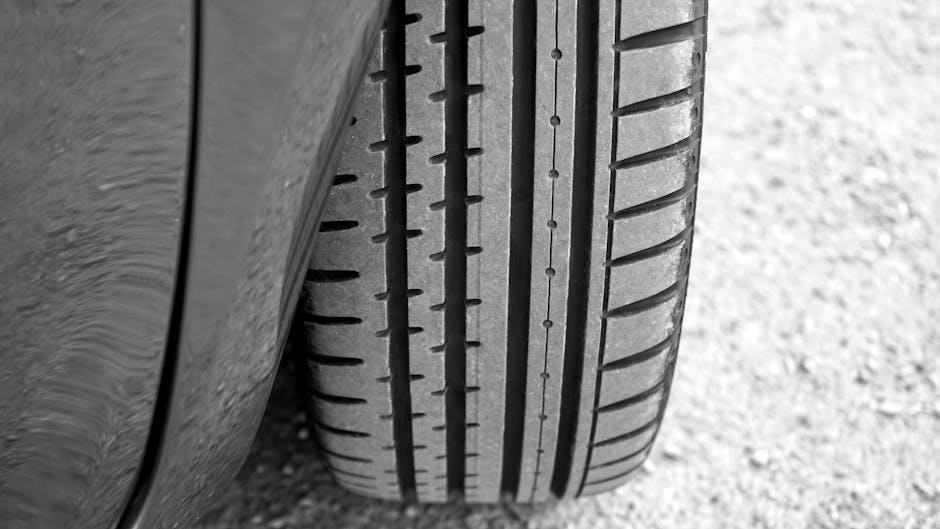
Every 9 Months Maintenance
Replace spark plugs for optimal engine performance and fuel efficiency. Change the fuel filter to ensure clean fuel flow. Check and adjust vehicle alignment for proper tire wear and handling.
Spark Plugs Replacement
Spark plugs are essential for proper engine function, igniting the fuel-air mixture to power your car. Over time, they wear out, reducing performance and fuel efficiency. Replace spark plugs every 30,000 to 100,000 miles, depending on your vehicle’s specifications. Worn-out spark plugs can cause misfires, poor acceleration, and decreased mileage. Ensure to gap new spark plugs correctly before installation. If unsure, consult a professional mechanic to avoid engine damage. Regular replacement maintains optimal engine performance, reduces emissions, and prevents costly repairs down the road.
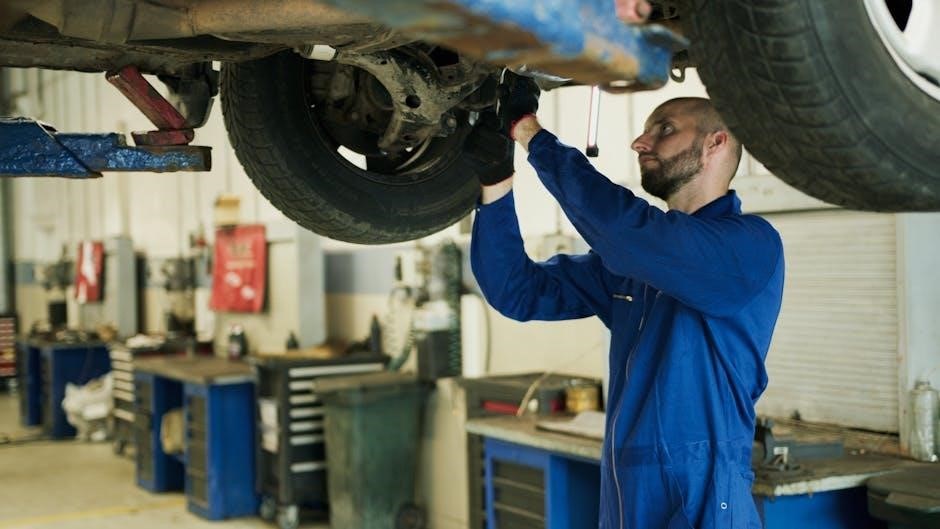
Fuel Filter Replacement
A dirty fuel filter can reduce engine performance, decrease mileage, and cause starting issues. Replace your fuel filter every 15,000 to 30,000 miles, depending on your vehicle’s specifications. A clean filter ensures proper fuel flow, improving engine efficiency and power. Use a torque wrench for installation and dispose of the old filter responsibly. Regular replacement prevents clogs, maintains fuel system health, and avoids costly repairs. Consult your owner’s manual for specific recommendations or a mechanic if unsure. Keep your engine running smoothly with timely fuel filter replacements.
Vehicle Alignment Check
Regular vehicle alignment checks ensure proper tire wear, improve handling, and enhance safety. Misaligned wheels can lead to uneven tire wear, reduced fuel efficiency, and increased risk of accidents. Schedule an alignment every 9 months or when noticing signs like pulling to one side, uneven tire wear, or vibrating steering. A professional mechanic will adjust camber, caster, and toe angles to manufacturer specifications. Proper alignment extends tire life, improves driving comfort, and prevents costly repairs. Include this check in your maintenance routine for optimal vehicle performance and safety on the road.

Every 12 Months Maintenance
Annual maintenance ensures your vehicle remains reliable and safe. Key checks include oil changes, tire rotations, and brake inspections. Replace spark plugs and inspect belts for wear. Ensure battery health and coolant levels are optimal. Addressing these tasks yearly prevents major issues and keeps your car running smoothly. Stay proactive with your maintenance schedule for long-term performance and safety.
Timing Belt Replacement (If Applicable)
Replace the timing belt every 60,000 to 105,000 miles, as specified in your vehicle’s manual. Failure to do so can result in costly engine damage. Inspect the belt for cracks, frays, or wear during annual maintenance. If damaged, replace it immediately to avoid engine failure. Consult a professional mechanic for this critical service, as improper installation can lead to severe consequences. A well-maintained timing belt ensures smooth engine operation and prevents unexpected breakdowns. Stay on schedule to protect your engine and maintain reliability.
Vehicle Inspection for Registration
A vehicle inspection for registration ensures your car meets safety and emissions standards. Check tires, brakes, lights, and emissions systems annually. Verify all safety features, such as seatbelts and airbags, are functioning properly. Address any issues to avoid registration delays. A clean inspection record confirms your vehicle is roadworthy and environmentally compliant. Stay organized with a printable checklist to track inspection results and maintain a hassle-free registration process. Regular inspections also help identify potential problems early, saving you time and money in the long run.
Annual Service and Inspection
An annual service and inspection is crucial for maintaining your vehicle’s health. It includes a thorough check of oil and filter changes, tire rotations, and brake inspections. Emissions testing ensures environmental compliance. A detailed inspection of belts, hoses, and suspension components is also performed. Addressing issues early prevents costly repairs. Use a printable checklist to track progress and ensure all tasks are completed. Regular annual servicing enhances safety, performance, and fuel efficiency, keeping your car running smoothly year-round. Stay proactive with a comprehensive annual maintenance plan.

Seasonal Car Maintenance
Adapt your car care routine to seasonal changes. Winterize with antifreeze checks and tire swaps, while summer calls for coolant and AC inspections. Stay prepared year-round with a checklist.
Winter Maintenance Checklist
Prepare your vehicle for cold weather with a winter maintenance checklist. Check antifreeze levels to prevent engine damage, ensure tire pressure is adjusted for colder temperatures, and inspect tread depth for traction. Test the battery health and charging system, as cold weather can drain power. Replace windshield wipers with winter blades for better visibility and top up washer fluid with a winter formula. Inspect lights and electrical systems for proper function and consider installing winter tires for improved safety. Don’t forget to stock a winter emergency kit with blankets, gloves, and a flashlight.
Summer Maintenance Tips
Keep your car running smoothly in the heat with these summer maintenance tips. Check oil levels and switch to a lighter viscosity oil if recommended. Inspect tire pressure, as heat can cause pressure to rise, and ensure proper tread depth for traction. Test the air conditioning for cooling efficiency and recharge if necessary. Replace the air filter to improve fuel efficiency and performance. Check the cooling system for leaks and top up fluids to prevent overheating. Finally, inspect brake pads and rotors for wear to ensure safe stopping power.
DIY vs. Professional Maintenance
Balance DIY car maintenance for simple tasks like oil changes and tire checks, while leaving complex repairs to professionals for safety and efficiency. Plan accordingly to save costs.
When to Perform DIY Car Maintenance
DIY car maintenance is ideal for simple, routine tasks like oil changes, tire pressure checks, and windshield wiper replacements. These tasks are straightforward and require minimal tools. DIY is also suitable for inspecting air filters, checking fluid levels, and cleaning battery terminals. It’s a cost-effective way to stay connected with your vehicle and ensures minor issues are addressed before they escalate. However, always refer to your car’s manual for guidance and avoid complex repairs that require specialized skills or equipment. DIY maintenance can save money and time when done correctly.
When to Consult a Professional Mechanic
Consult a professional mechanic for complex tasks like diagnosing issues, repairing advanced systems (e.g., ABS, HVAC), or performing major repairs such as timing belt replacements. If you’re unsure about a procedure or lack the necessary tools, seeking expert help is advisable. Professionals are also essential for tasks requiring specialized knowledge, like engine overhauls or electronic system troubleshooting. Annual inspections and safety checks benefit from their expertise to ensure compliance and reliability. Don’t hesitate to involve a mechanic for tasks beyond your skill level to avoid potential damage or safety risks.
Car Safety and Emergency Preparedness
Ensure your vehicle is equipped with an emergency kit, including a first-aid kit, jumper cables, and flashlight. Regular safety checks and seasonal preparedness are crucial for reliability and safety on the road. Stay proactive with expert tips to avoid breakdowns and handle unexpected situations confidently. Download our checklist for a comprehensive guide to emergency readiness and safety measures.
Essential Safety Checks Before a Road Trip
Before embarking on a road trip, ensure your vehicle is roadworthy. Check tire pressure, tread depth, and look for signs of wear. Inspect brakes, brake fluid levels, and brake pads for optimal stopping power. Verify all lights, including headlights, taillights, and turn signals, to ensure visibility. Top up fluids like oil, coolant, and windshield washer fluid. Test the battery and ensure terminals are clean. Carry an emergency kit with a first-aid kit, jumper cables, and a flashlight. Review your maintenance checklist to address any issues before departure.
Building a Car Emergency Kit
A well-stocked car emergency kit is essential for safety and preparedness. Include a first-aid kit, jumper cables, a flashlight with extra batteries, and a fire extinguisher. Add a multitool, reflective triangles or flares, and a blanket for cold weather. Store important documents like vehicle insurance and emergency contact information. Consider a portable phone charger and a small shovel for snowy conditions. Regularly check and update your kit to ensure all items are functional and within expiration dates.
Cost-Effective Maintenance Tips
Adopting cost-effective strategies ensures your car stays well-maintained without overspending. Use synthetic oil for longer intervals, buy parts in bulk, and compare prices at local shops or online.
Budgeting for Annual Car Maintenance
Set aside a dedicated budget for annual car maintenance to avoid financial strain. The average cost ranges from $500 to $1,000, depending on your vehicle’s make, model, and mileage. Prioritize essential services like oil changes, tire rotations, and brake inspections. Consider setting up a monthly savings plan to cover unexpected repairs. Use your car’s maintenance checklist to identify upcoming services and allocate funds accordingly. Regular upkeep not only prevents costly breakdowns but also ensures your car runs efficiently and safely throughout the year.
Understanding Service Intervals to Avoid Unnecessary Costs
Understanding service intervals is key to avoiding unnecessary costs. Regular maintenance, such as oil changes and tire rotations, should be done at recommended intervals to prevent wear and tear. Overlooking these can lead to costly repairs. Use your car maintenance checklist to track when services are due. Sticking to the manufacturer’s schedule ensures optimal performance and extends your car’s lifespan. By addressing issues early, you save money and avoid unexpected breakdowns. Plan ahead and budget for routine care to keep your vehicle running smoothly and efficiently.
Maintenance Tracking and Logging
Use a car maintenance checklist PDF to track and log services. Digital tools and printable logs help monitor oil changes, tire rotations, and inspections, ensuring timely maintenance and organization.
How to Track Your Car Maintenance Schedule
Tracking your car maintenance schedule is simple with a car maintenance checklist PDF. Use digital apps or printable logs to record oil changes, tire rotations, and inspections. Note dates, mileage, and services performed. This helps stay organized, ensure timely maintenance, and avoid overlooked tasks. Regular updates keep your records accurate, making it easier to plan future services and maintain your vehicle’s health. Consistent tracking also provides a clear history for resale value and warranty purposes.
Using a Printable Car Maintenance Log
A printable car maintenance log is a practical tool for organizing your vehicle’s upkeep. It allows you to document oil changes, tire rotations, inspections, and repairs in one place. By tracking maintenance activities, you can ensure tasks are completed on time and avoid overlooked services. This log serves as a clear record of your car’s history, which can be useful for future reference, warranty claims, or resale. Print it out and keep it in your glove compartment for easy access and updates.
Digital Tools for Maintenance Tracking
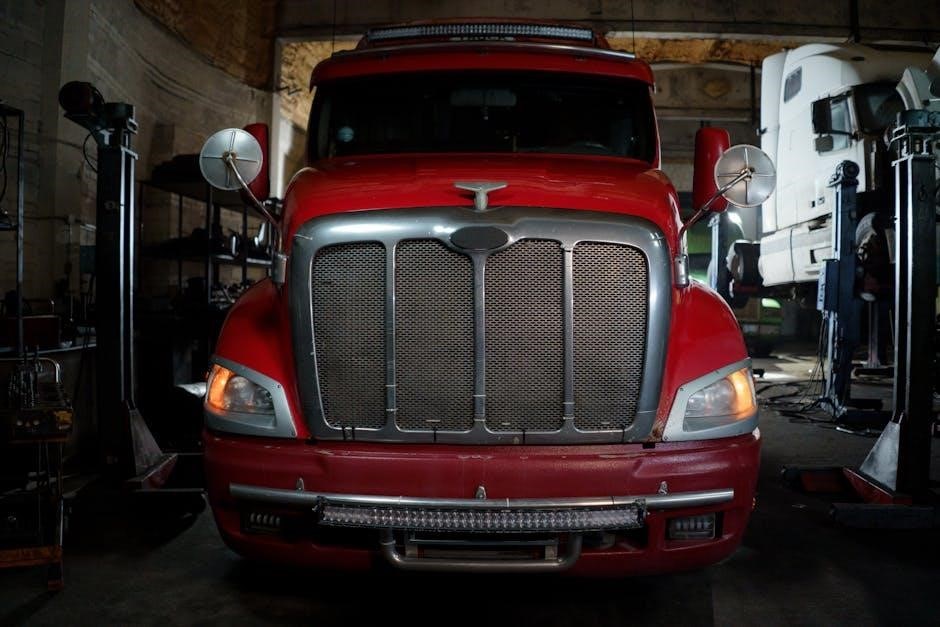
Digital tools offer a modern approach to tracking car maintenance, providing convenience and organization. Apps and spreadsheets allow you to set reminders, log services, and monitor mileage. Downloadable checklists and templates, such as Excel files or PDFs, can be customized to suit your needs. These tools help ensure no maintenance tasks are overlooked and provide a clear history of your car’s care. They are ideal for busy owners who prefer digital solutions over traditional paper logs, offering accessibility and ease of use.
Customizing Your Maintenance Checklist
Tailor your Auto Maintenance Checklist PDF to fit your vehicle’s specific needs, driving habits, and mileage. Adjust tasks based on your car’s type, usage, and conditions for better organization and peace of mind.
Adjusting the Checklist Based on Vehicle Type
Customize your Auto Maintenance Checklist PDF based on your vehicle’s type, such as sedan, SUV, or truck, to address specific needs. For example, trucks may require more frequent brake inspections due to heavier loads, while SUVs might need additional checks on suspension systems. Consider factors like engine size, transmission type, and 4WD components. Seasonal adjustments, such as winter tire checks for colder climates, can also be incorporated. Tailoring the checklist ensures all unique aspects of your vehicle are covered, optimizing maintenance efficiency and preventing overlooked issues.
Considering Driving Conditions and Mileage
Adapt your Auto Maintenance Checklist PDF based on driving conditions and mileage to ensure optimal care. Vehicles driven in extreme temperatures, high humidity, or stop-and-go traffic may require more frequent oil changes and brake inspections. For high-mileage cars, pay extra attention to belts, hoses, and suspension components. Regularly update the checklist to reflect changes in driving habits or environmental factors, ensuring all potential wear points are addressed. This tailored approach helps prevent unexpected issues and extends your car’s reliability and performance over time.
Conclusion
A well-organized Auto Maintenance Checklist PDF ensures your vehicle remains safe, efficient, and reliable. Regular checks prevent costly repairs and extend lifespan. Download and use it today for hassle-free car care!
Final Thoughts on the Importance of a Car Maintenance Checklist
A car maintenance checklist is essential for ensuring your vehicle runs safely and efficiently. It helps prevent breakdowns, reduces repair costs, and extends your car’s lifespan. By following a structured schedule, you can address issues early, maintain performance, and avoid unexpected failures. Whether you’re a DIY enthusiast or prefer professional services, a checklist provides clarity and peace of mind. Download a printable Auto Maintenance Checklist PDF today and take control of your vehicle’s care for years to come.
Encouragement to Download and Use the PDF Checklist
Download and use our Auto Maintenance Checklist PDF to simplify your car care routine. This free, printable guide offers a clear, organized approach to tracking essential maintenance tasks. By following the checklist, you’ll ensure your vehicle remains safe, efficient, and reliable. It’s a valuable tool for DIY enthusiasts and professionals alike, helping you save money and extend your car’s lifespan. Take the first step toward better vehicle care—download the PDF today and start maintaining your car with confidence!





